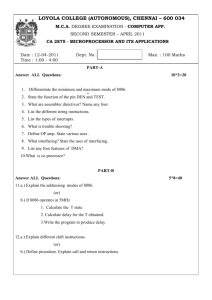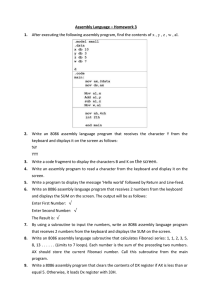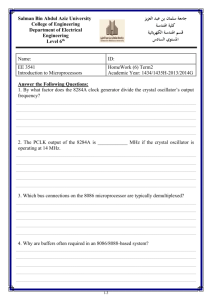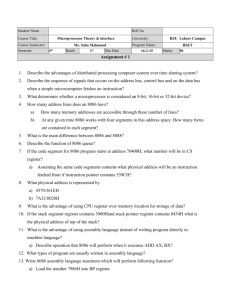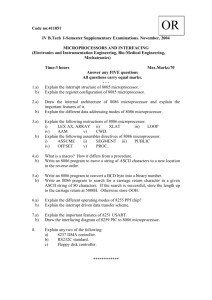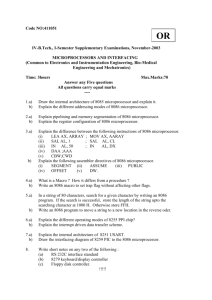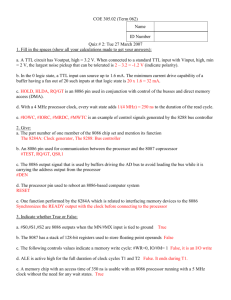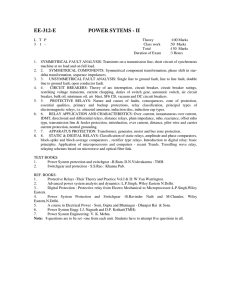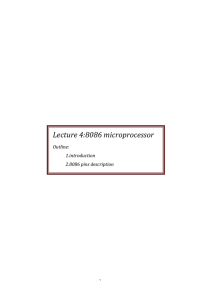MCS-12 - Indiastudypoint.com
advertisement
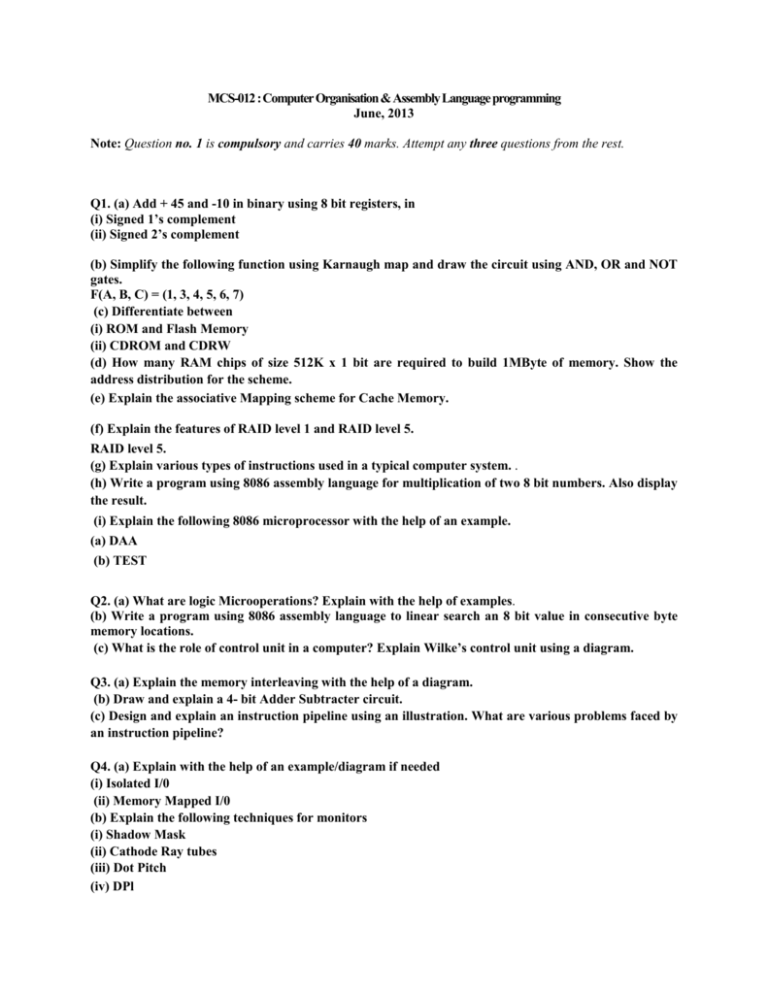
MCS-012 : Computer Organisation & Assembly Language programming June, 2013 Note: Question no. 1 is compulsory and carries 40 marks. Attempt any three questions from the rest. Q1. (a) Add + 45 and -10 in binary using 8 bit registers, in (i) Signed 1’s complement (ii) Signed 2’s complement (b) Simplify the following function using Karnaugh map and draw the circuit using AND, OR and NOT gates. F(A, B, C) = (1, 3, 4, 5, 6, 7) (c) Differentiate between (i) ROM and Flash Memory (ii) CDROM and CDRW (d) How many RAM chips of size 512K x 1 bit are required to build 1MByte of memory. Show the address distribution for the scheme. (e) Explain the associative Mapping scheme for Cache Memory. (f) Explain the features of RAID level 1 and RAID level 5. RAID level 5. (g) Explain various types of instructions used in a typical computer system. . (h) Write a program using 8086 assembly language for multiplication of two 8 bit numbers. Also display the result. (i) Explain the following 8086 microprocessor with the help of an example. (a) DAA (b) TEST Q2. (a) What are logic Microoperations? Explain with the help of examples. (b) Write a program using 8086 assembly language to linear search an 8 bit value in consecutive byte memory locations. (c) What is the role of control unit in a computer? Explain Wilke’s control unit using a diagram. Q3. (a) Explain the memory interleaving with the help of a diagram. (b) Draw and explain a 4- bit Adder Subtracter circuit. (c) Design and explain an instruction pipeline using an illustration. What are various problems faced by an instruction pipeline? Q4. (a) Explain with the help of an example/diagram if needed (i) Isolated I/0 (ii) Memory Mapped I/0 (b) Explain the following techniques for monitors (i) Shadow Mask (ii) Cathode Ray tubes (iii) Dot Pitch (iv) DPl (c) Explain the concept of Virtual Memory in the context of memory management. Q5. (a) Represent a binary number 1001011 in IEEE 754 floating point representation using 32 bit word length (24 bit mantissa and 8 bit biased exponent). (b) What is Interrupt? Briefly explain the four 8 interrupt conditions. Explain the process of interrupt handling with the help of diagrams. (c) Explain the functioning of a J-K Master Slave flip flop with the help of a diagram. MCS-012 : Computer Organisation & Assembly Language programming December, 2013 Note: Question no. 1 is compulsory and carries 40 marks. Attempt any three questions from the rest. 1. (a) Add-35 and -31 in binary using 8-bit register, in (i) Signed 1’S Complement (ii) Signed 2’S Complement (b) Simplify the following function using Karnaugh map and draw the circuit using And, OR, Not gates. (C) Differentiate between. (i) SRAM Vs DRAM (ii) CD-R Vs CD-RW (d) How many RAM chips are required of size 128k × 1 to build 1 M byte of memory. Show the address distribution for the scheme. (e) What do you mean by Content Addressable Memory (CAM)? Explain. (f) Explain the following. (i) Seek time (ii) Latency time (iii) Access time (g) Draw and explain the logic diagram of a 3 bit synchronous counter. (h) Write a program using 8086 assembly language for division of a 16 bit number by a 8 bit number. Also display the result. Q2. (a) What is instruction pipelining? What are the various problems that can occur while using an instructing pipeline? (b) Write a program using 8086 assembly language to find the minimum number in a list of byte size values consecutively stored in the memory. (c) How Call and Return instruction for a subroutine are handled in a computer? Q3. (a) What is multiplexer? Explain how an 8 × 1 multiplexer can be designed using two 4 × 1 multiplexers. (b) What is a master slave flip flop? Why do we require Master Slave Combination? c) Explain the fetch cycle and execute cycle for an addition instruction. Q4. (a) Explain with the help of an example/diagram if needed. (i) Programmed I/O (ii) DMA (b) Explain the functioning of a Micro-programmed control unit with the help of a diagram. (c) What are the uses of large register file in a RISC? Explain with the help of a diagram. Q5. (a) Explain any four addressing modes in 8086 microprocessor with the help of an example each. (b) Write code sequence in 8086 assembly language for performing the following operation (c) Differentiate between. (i) Printers versus Scanners (ii) CRT versus LCD
